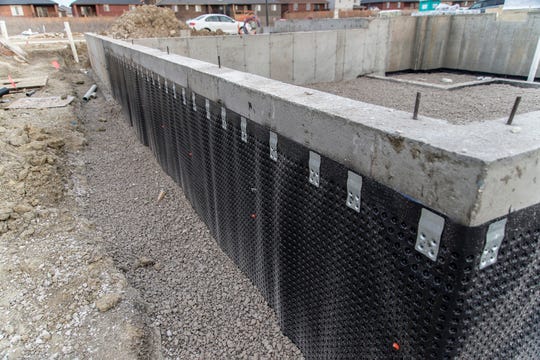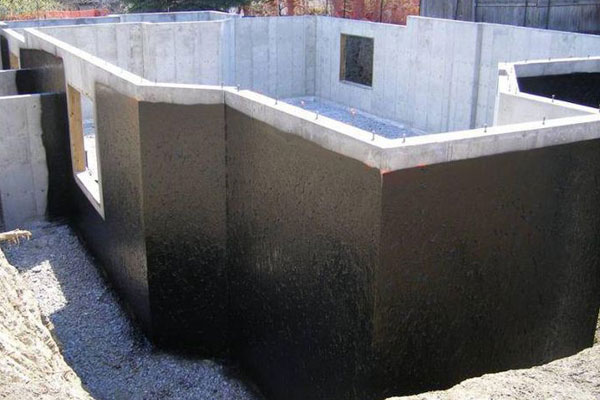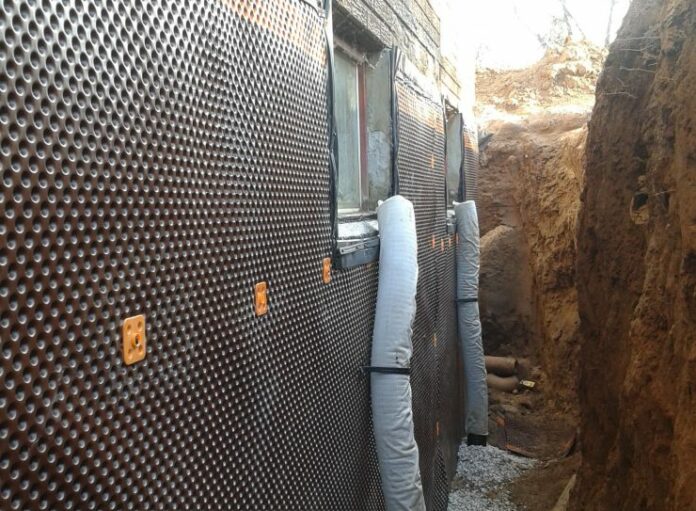Basements are often fully or partially exposed to the surrounding soil and groundwater, resulting in specific exposure and stress from the prevailing permanent or temporary environmental conditions. Basements are faced with more stringent requirements regarding durability, exposure and stress conditions, construction method and sequence, ease of application and total cost management. In addition, sustainable system solutions are becoming more important in order to save natural resources, energy and water, plus reduction of CO2, etc. Any lack of water tightness severely reduces the long-term durability of a building or other below-ground structure and badly affects its planned use as water ingress will result in physical attack and deterioration of the concrete. This leads to expensive structural repair works, damage or loss of interior finishes and goods, operational downtime, or serious impact on the internal environment.
Type of Exposure and Stress in Basement ;
- Different levels of water exposure and pressure (e.g. damp soil, percolating water or water under hydrostatic pressure,and open water)
- Aggressive groundwater containing chemicals (commonly sulphates and chlorides in solution)
- Unequal static forces (due to load, settlement or uplift, etc.)
- Dynamic forces (e.g. from settlement, earthquake, explosion, etc.)
- Temperature variations (frost during the night/winter, heat during the day/summer)
- Gases in the ground (e.g. Methane and Radon)
- Aggressive biological influences (plant roots/growth, fungal or bacterial attack)
Signs of basement water damage in basement
- Cracked walls: Cracks may be horizontal, vertical, diagonal or stair-stepped. Severe pressure or structural damage is evident by widening cracks.
- Buckling walls: Usually caused by hydrostatic pressure. Walls appear to be bowed inward.
- Peeling paint: Water seeping through walls may lead to bubbling or peeling paint along basement walls.
- Efflorescence: White, powdery residue found on basement walls near the floor.
- Mould: Fungi usually grow in damp, dark areas and can cause respiratory problems after prolonged exposure.
The selection of the appropriate waterproofing method, the project specific design of the chosen waterproofing system and its correct installation on site are key elements in minimising future maintenance and repair costs over the service life of the structure. Basement waterproofing involves techniques and materials used to prevent water from penetrating the basement of a structure. Waterproofing a basement that is below ground level can require the application of sealant materials, the installation of drains and sump pumps, and more. The spaces of basements are particularly prone to wetness and moisture development. Water in the soil causes hydrostatic pressure to be exerted underneath basement floors and walls. This hydrostatic pressure can force water through cracks, which can cause major structural damage as well as mould, decay, and other moisture-related problems.
Types of basement waterproofing methods
Exterior basement waterproofing
The exterior basement waterproofing method is designed to prevent water from causing any major structural damage to the building, using polymers and membranes to coat the exterior basement walls.

Interior basement waterproofing
Interior basement waterproofing using coatings is effective where condensation is the main source of wetness. It is also effective if the problem has minor dampness. Installing a backwater valve is one of the most effective measures to save your basement. Installing a drainage system is the most complex solution for interior waterproofing.

Integral basement waterproofing
A waterproofing system integrated into the concrete structure. Liquid water penetration is stopped by the structure itself and cannot entirely pass through into the basement. Typical products are admixtures for watertight concrete combined with appropriate joint sealing systems for connection, construction and movement joints.

Different types of materials used for basement waterproofing
Polyurethane Foam – designed to expand with water to temporarily block the passage of water through the crack or void. Their fast expansive reaction with water forms a tough and flexible /elastic foam.
Polyurethane – hydrophobic, flexible and used for the non-structural injection sealing and waterproofing of voids, cracks and joints. Their low viscosity allows good penetration into the concrete structure to seal the leaks and achieve a durable elastic seal.
Epoxy Resins- widely used for structural repairs by injections of cracks and voids in load bearing reinforced concrete structures or elements. Their low viscosity allows excellent penetration into cracks in the structure and this also helps to ensure permanent and durable load transfer based on their excellent adhesion to the concrete.
Acrylate – have an extremely low viscosity and therefore have ideal penetration abilities. Their reaction (hardening) time is also adjustable, which allows flexibility in adaptation of the injection material to the prevailing conditions on site.
Microfine Cement Suspension – non-movement accommodating, rigid, polymer modified, injection materials (also often known as Microfine cement grouts), which are based on blends microfine cements.

Different types of basement waterproofing membrane products
There are different types of basement waterproofing membrane products available in the market depending on the needs and requirements each of them is used. Each of them is explained below.
Modified Bitumen Membrane – a Self-Adhesive, Fully Bonded, SBS membrane with 1.5mm thickness that provides strong bonding strength with the substrate. It has Heat resistance and good elongation properties.
Non-Reinforced PVC Membrane for Waterproofing – a flexible membrane made of Polyvinyl Chloride having a thickness of 2mm. It is a non-reinforced, opaque, flexible membrane made of Polyvinyl Chloride (PVC) with the dual-tone
Fully Bonded HDPE Membrane – A membrane with 1.2mm thick that provides unique bonding with concrete poured against it to prevent lateral water migration.
Single-ply rubber membrane – It is manufactured from synthetic EPDM rubber.
Portland cement-based membrane – This type of membrane helps in resisting positive and negative pressure under 100m head in water retaining and below ground structures.
Cement-based membrane – It is applied to a concrete surface, the active chemicals combine with the free lime and moisture present in the capillary tract to form insoluble crystalline complexes.

Polymer modified thick film membrane – It is suitable for waterproofing building structures inside and outside as well as foundation skirting. It cures rapidly even in adverse weather conditions. It is a polymer modified thick film sealant.
APP modified bitumen membrane – Membrane It has superior puncture resistance, high tensile strength and can withstand structural stresses.
Self-adhesive membrane – It is a modified bitumen membrane that has superior low-temperature application and good flexibility. Due to its flexibility and presence of a tough and durable top surface. The membrane is protected on the self-adhesive side usually with a silicone coated release film.
Preformed membrane – This type of membrane masks the surface with in-situ membranes with bonding adhesives. Since membranes are factory-made, quality control for thickness is possible, and they are suitable for high water tables, deep and large basements.
EPDM membrane – This is a single-ply rubber waterproofing membrane that is being used in basement waterproofing. It is the best material for waterproofing in a high water table, which is applied as a loose lay.
Cell mesh membrane – This type of membrane uses cell mesh that bonds with freshly placed concrete which acts as a seal. This prevents water ingress. It can be installed rapidly, with no need for blinding concrete, priming, or protection and can be trafficked immediately after application.
Conclusion
Discussed above are different products used for basement waterproofing.
Image Source: basementwaterproofingservices.uk


